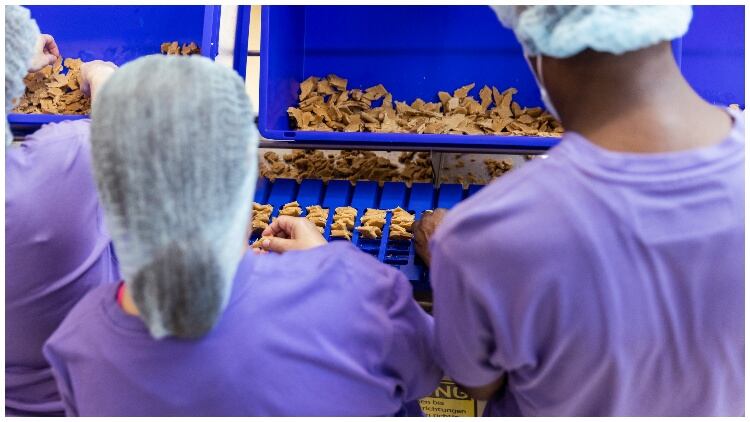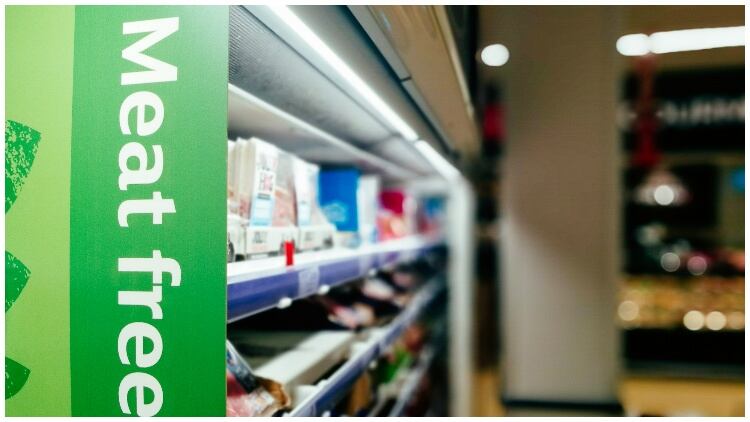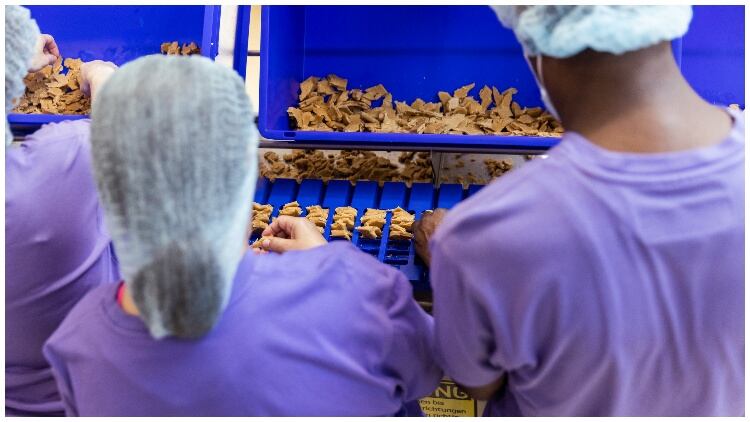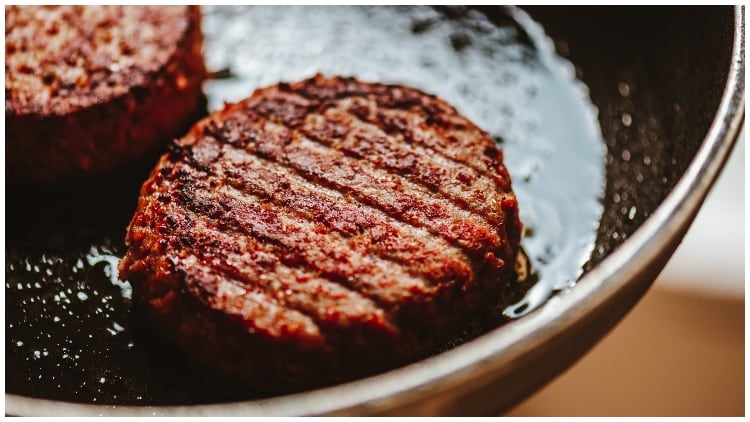Did you know that fats play a significant role in plant-based ‘meats’? This is because in their animal counterparts, fats are often key to flavour and responsible for creating that juiciness that many consumers enjoy. As such, when creating alternatives, it’s important to formulate with fat in mind.
How does fat content affect food?
"In meat alternatives, fat contributes to product appearance, overall flavour, aroma during cooking and consumption, cooking experience, mouthfeel, succulence, and intensity of the aftertaste. Beyond its functional attributes, it also impacts Nutri-Score ratings and ingredient statements, which are also important to consumers,” explained Michel van der Poel, European commercial lead for Cargill’s edible oil solutions.
“In plant-based dairy alternatives, alongside their nutritional contributions, fats impact flavour and play a key role in providing structure and mimicking the creamy mouthfeel often associated with traditional dairy products.”
“Animal meat is typically high in saturated fats, which are solid at room temperature and give meat its characteristic texture. To replicate this, plant-based meats are often formulated with high levels of plant-based fats, in our case usually rapeseed oil,” added Olivia Sinclair, UK marketing manager from alternative meat protein brand, Planted.
What kinds of fats are in animal-based foods and how can they be replaced in plant-based alternatives?
Animal-based foods contain different types of fats. Meat, dairy and eggs typically comprise higher levels of saturated fatty acids, while commodities rich in monounsaturated and polyunsaturated fatty acids include fish, nuts and seeds.
As van der Poel noted above, Sinclair told Food Manufacture that when it comes to creating plant-based products that mimic animal derived foods, it’s important to consider nutritional and functional properties.
“Some plant-based fats are better at providing a creamy texture, while others are better at creating a solid texture that mimics the texture of animal-based fats,” Sinclair explained. “One common approach to replacing animal-based fats is to use plant-based oils such as olive oil, rapeseed oil or sunflower oil.
Moreover, as these are rich in those aforementioned monounsaturated and polyunsaturated fatty acids, these ingredients also boast health benefits.
Using technology to create rivalling plant-based fats
There are also new technologies emerging to help manufacturers create fats for plant-based alternatives that rival meat – a positive advance, as van der Poel pointed out, “current solutions don’t always live up to consumer expectations”.
He continued: “By embracing new technologies, harnessing our full ingredient toolbox and leveraging our global application knowledge, we’re poised to accelerate the development of the next-generation of plant-based products.”

Cargill has teamed up with CUBIQ FOODS, a food tech company, to develop and quickly achieve wide-scale commercialisation of novel fat technologies.
One of the solutions is Go!Drop® - a licensed trademark of Cubiq Foods S.L. - which enables formulators to potentially reduce total fats, saturated fats and calories compared to traditional animal fats or tropical oils.
Go!Drop® creates an emulsion of vegetable oils and water, which is stabilised using plant-based ingredients. It’s because of the water within the vegetable oil emulsion that the total fat and saturated fat levels and calories drop.
This solution also provides the product, say a plant-based patty it’s added into, a higher melting point, which, among other properties, allows it to behave like an animal fat.
“Functionally, it includes advancements to more closely mimic the characteristics of meat, like visual appearance, mouthfeel and bite. However, this is just the beginning as we work together to bring more innovations to the market,” said van der Poel.
“On the sensory side, Go!Drop® supports juiciness, with a cooking behaviour that avoids extensive leaching of water, oils and aromas. As a result, it delivers the juicy products that today’s flexitarian consumer wants. It also helps mimic the marbling or white parts in cold cuts or sausages, with a colour that closely resembles animal fat, and acts as an aroma carrier, for improved taste compared to traditional plant-based fats.
“When Go!Drop® is added into a plant-based burger patty or salami it delivers a nice cooking sensation and supports optimal organoleptic properties, resulting in a truly enjoyable sensory experience”
Planted is focusing on similar efforts, looking to create plant-based fats that have a similar melting point and mouthfeel to animal-based but with reduced saturated fatty acids.
The challenges of creating plant-based fat solutions
“Creating an excellent plant-based meat alternative product requires considered work, leveraging plant-based proteins, texturisers, fibers, and fats and oils to replicate the structuring, gelling, emulsifying, colouring, flavouring, and nutritional benefits of real meat,” van der Poel commented.
“Since vegetable oils and fats are essential in plant-based meat alternatives, finding the optimal mix is key to achieving optimal texture and organoleptic properties, and an improved nutritional profile. These ingredients help formulators replicate the visual and melting aspects of animal-based fat, while also serving as excellent flavour carriers.
“But competence in plant-based fats and oils is just one aspect of the formulation conundrum. Other important components of a plant-based meat alternative solution include the use of protein and blended ingredient solutions. Understanding how each of these building blocks works and how they interact can ‘make or break’ the success of the final product.”
Is mimicking meat the right way forwards for plant-based?
There is research to suggest that plant-based meats may have gone a stretch too far, with some consumers becoming apprehensive to try something which looks and tastes like meat but isn’t quite meat. While other studies have pointed to concern over the unintended consequences of moving away from farmed meat and scepticism around health benefits.
But there is also research to the contrary, including a survey from the National Cattlemen’s Beef Association,1 which found that although beef excels when it comes to price, protein and minimal ingredients, the respondents also felt that plant-based ‘meat’ was better for the environment and health.

Cargill’s own studies reveal that the biggest barriers to purchase lie in taste and flavour (27%) and, as the National Cattlemen’s report found, price (26%).
“Twenty-five percent of respondents said that they see no reason against consuming meat alternatives, and 36% of consumers in Europe agree or strongly agree with the statement ‘I am open to consuming foods that have been produced using new food technologies’,2” said van der Poel.
Adding her two cents, Sinclair said: “Unfortunately, creativity alone will be no solution to the current climate crisis where a quarter of global greenhouse gas emissions are from the food system More than half of those are produced by animal agriculture.
“It is of great importance to enable consumers to make a conscious choice of products and to use them for their intended purpose. Many alternative products are designed in such a way that they can and should replace the animal product one-to-one.
“The product features and information must make it clear which animal product is being replaced by the alternative product. This facilitates the integration of the alternative products into the personal menu and thus a transition to a plant-based and sustainable diet.”
Commenting on whether plant-based should move away from mimicking meat, Sinclair believes we have to deliver alternatives in “familiar forms” such as sausages, schnitzel or burgers.
“The reason for that is deeply rooted traditions that you can't break in a hurry. It takes seven generations to fundamentally change eating habits, a famous vegetarian restaurant chain CEO once said.
“Our goal is to one day emancipate ourselves from 'animal meat' as a shaper and that we produce proteins that have even better amino acid complexities than today's animal meat. Which have a good bite and for which there are good recipes. Which are attractively priced and good for the environment.”
Van der Poel added: “While there is always room for choice in the marketplace, our research suggests that most flexitarian consumers have high expectations for plant-based meat and dairy alternatives. These consumers grew up loving animal-based meat and dairy products and have specific expectations about what a plant-based alternative should be in terms of look, taste, texture and nutrition. The beauty of ingredient solutions like Go!Drop is how closely they mirror the functional roles of traditional animal fats.”
How will the plant-based category evolve in the future?
According to van der Poel, the plant-based boom shows no signs of ebbing in Europe – in fact, he says its popularity is accelerating and expanding to new applications very quickly on a global scale.
“The plant-based movement is stretching beyond vegan and vegetarian to a more mainstream flexitarian approach, today representing approximately 30% of European consumers,” he said, citing details the EU 2021 smart protein plant-based food sector report.3 “These shoppers are driven primarily by their perception that plant-based eating will help them maintain good health.”
But he also recognises that flexitarians will continue to be tough to satisfy.
“They’ve grown up loving meat and dairy, and they have specific expectations in mind about what a burger, for example, should look and taste like, and these sensory issues have proven to be key barriers.
“In addition, there is an increased demand for what is considered ‘label-friendly’ products – i.e., the consumer feels familiar with the ingredients used. In fact, 72% of European consumers indicated that they are likely to check the ingredient list of plant-based meat alternative products.”4
“Other factors, such as a growing connection to sustainability and an influx of new and improved plant-based products are expected to keep this trend alive for years to come – we are even starting to see producers add eco-scores onto their products to highlight their lower environmental impact.”

Planted are also optimistic about the future. In 2022 it more than doubled its production and intends to do so this year as well.
“We had a strong start to the year with Veganuary and we see that this encouraged consumers to keep habits they learnt during this time throughout the year, but also overall category awareness of new consumers. It makes us very proud to see our products delighting so many consumers across Europe,” said Sinclair.
“Unique aspects such as our 0% additives and non-artificial ingredients, the incredible technology that provides the fibrous texture, and the taste makes all the difference. We look forward to further strengthening our international presence and expanding our network of partners who share our passion for making a positive impact on this planet.
“Looking ahead, we believe consumers will be searching for healthier, cleaner, natural and inexpensive products. We love the awareness some companies originally created for the alternative protein space. However, we feel that a better approach is needed to convince consumers, hence we create products that are good for you, using only peas, sunflowers, oats and rapeseed oil as base.”
Concluding, van der Poel said: “Taste, nutrition, value for money and naturalness are the top concerns within the sector – and therefore the key opportunities to optimise plant-based solutions, such as by adding micronutrients or fibers.
“We’ll also be keeping an eye on the ‘next big thing’ in this space, which most likely will be exploring new subcategories such as fish and sausages.”
You may also be interested in reading our article on why processed foods have a bad rep and what industry can do to educate.
References
- 2022 policy book - National cattlemen’s beef association. Available at: https://www.ncba.org/Media/NCBAorg/Docs/2022-ncba-policy-book-master-copy.pdf (Accessed: 24 May 2023).
- Innova Consumer Research 2021
- The smart protein plant-based food sector report EU, 2021
- Source: Cargill’s 2021 Ingredient TrackerTM survey





